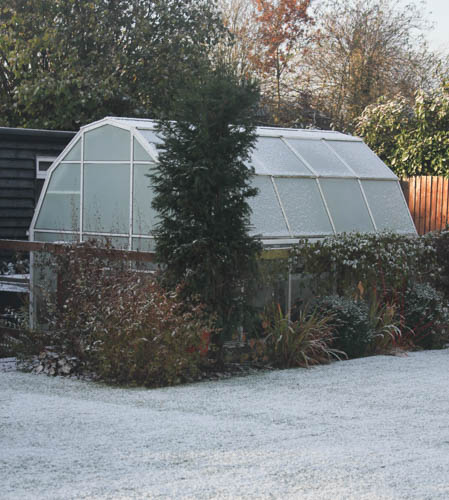
Open greenhouse vents for as long as possible on mild sunny days, shutting them before temperatures drop early in the afternoon. The combination of high temperatures and low light makes leaves and stems soft, spindly and prone to grey mould which spreads rapidly in cool, damp conditions. Though good air circulation is vital, avoid chilling draughts, don’t leave the door open and always err on the side of caution! Using a heater with a fan is very helpful; paraffin heaters increase atmospheric humidity.
When you buy indoor azaleas and poinsettias from the garden centre, carry them in a box to prevent them from falling over or being damaged on the journey home. Put indoor azaleas in a warm greenhouse to encourage more bloom if needed, then move them indoors when they are in full flourish.
If you need a break from the festivities, Christmas or Boxing Day are the traditional dates for sowing Onion seeds. Space them evenly over the surface of moist seed compost, and lightly cover with fine grade vermiculite. Put the tray in a heated propagator at 20C (70F) and they will germinate in 10-14 days
Plant garlic in pots or modules in colder areas, on heavy, wet soils, where growing on ridges is not an option or where there is a short growing season. It needs a long growing season and period of chilling – around 6 to 8 weeks around 0-10C for optimum production. Leave it outdoors to chill, then bring it into a cold greenhouse until next spring, water as it starts into growth and transplant when the soil dries out and growing conditions improve.
There is still time to lift rhubarb for an early crop. If you have a large clump of rhubarb, slice off a section with buds, and leave it lying on the soil surface for a few weeks until it has been frosted several times. This encourages growth buds to developing earlier. Pot it up into a container of peat free compost, move it into a warm greenhouse, water well and it will start to produce tender sticks of rhubarb early in spring, if not before.
Check regularly for over-wintering aphids, whitefly, red spider mite and other pests, including errant slugs and snails hiding under and between pots or in corners of the greenhouse frame. Continue successional sowing of salad leaves; warming the compost in a heated propagator beforehand will help germination. Remove any fallen leaves and debris and add them to the compost heap and weed seedlings from the benches.
Sow any peas that are left over from earlier this year into pots or deep trays of compost, about 5cm apart. Harvest the tips, with a pair of scissors in late winter or early spring, when they are two or three inches tall, they will side shoot and provide more shoots. After harvesting, feed with half strength general liquid fertilizer as a boost to produce more edible growth. Enjoy the festive season. Happy gardening and stay safe. Matt.


